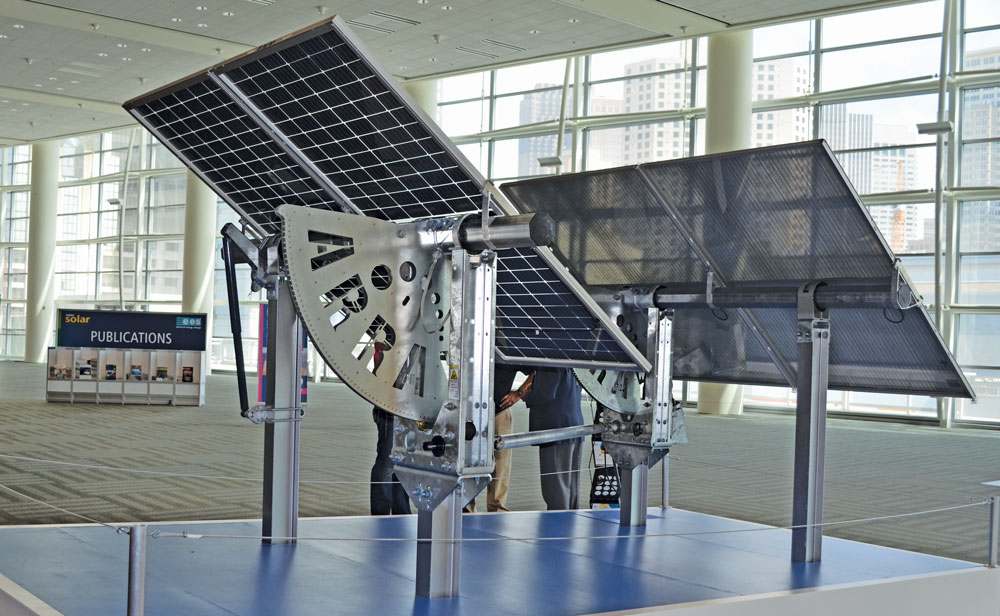Solar panels are often tilted to a storage position to prevent wind damage to utility-scale assets. Array Technologies introduced a passive storage strategy that reportedly prevents unnecessary production losses.
During heavy winds, utility-scale solar installations are often automatically tilted into the stowed position to prevent damage and downtime due to repairs. High winds can cause solar panels to vibrate and rotate, which can lead to micro-cracks, twisting or breaking of the panels.
However, storing solar trackers can lead to production loss, because they do not follow the sun in an active storage system.
Array Technologies, a leading supplier of solar tracking systems, collaborated with independent engineering and design firm DNV to study an alternative method to active storage, passive storage. The analysis aimed to evaluate the energy losses associated with different tracker wind thrust methods and took into account multiple variables including wind thrust speed thresholds, wind direction, residence time, wind speed threshold at weir exit, thrust angle and thrust direction.
In Array’s passive storage system, most rows follow normally when storage is activated by a wind event. Array modeled a wind event with DNV, which showed that only the outer rows of the solar panels and 17% of the inner rows were out of alignment with normal tracking. Meanwhile, the active stow system moved the entire array from the tracking position, did so at a lower wind speed and did not use wind direction as a criterion for stowing.
The study found that there are significant differences in energy production losses between passive and active storage systems. Passive storage was found to lead to an annual energy loss of 0.05%, while conventional active storage led to an average annual energy loss of 2.8%. The DNV research shows that conventional active stowage systems can lead to as much as 4.3% annual energy loss.
“Weather events costing $1 billion or more have escalated dramatically, with wind events now the second highest cause of insurance claims in the last thirty years,” the report said. “Array’s passive windstow technology not only reduces these risks by maintaining higher operational efficiency during wind events, but also improves the predictability of energy production forecasts.”
Array Technologies’ DuraTrack and OmniTrack products both use passive storage technology.
This content is copyrighted and may not be reused. If you would like to collaborate with us and reuse some of our content, please contact: editors@pv-magazine.com.

